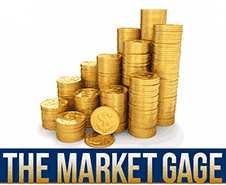
The price of Gold still handcuffed in its twenty dollar trading range. It seems that all markets are waiting to see if the House and Senate can agree on a tax plan. The jury is still out on that outcome, and until it’s settled I don’t expect any significant movement in the price of gold.
The dollar and bond prices virtually unchanged this morning.
For the most part the gold and silver ETF’s also seeing hardly any movement.
The CBOE VIX Index has reversed its upward movement seen earlier in the week, now trading at 11.64. For the time being, the House passing its version of the tax bill has seemed to calm equity investors as indicated by the VIX Index softening up a bit.
CME Fed Watch Toll odds for a rate hike in December still stands at 91.5 percent. I expect that number to remain at or near that level until we have an outcome on the proposed tax plan.
The Commitment of Traders report, released late because of the Federal holiday, revealed that the net long position in Gold increased by 5,000 contracts to 196,000 long and Silver saw an increase of 8,600 contract to 70,000 contracts long. This confirms that the position takers are very comfortable where the market is and still ever so slightly are willing to add to their positions.
Levels of support are still a distance away. In Gold not until $1,261 and in Silver not until $ 16.48 are the levels any longs would be concerned with.
Bond Prices, Currencies and the Price of Gold
We are constantly talking about the Bond market and Treasury Yields so I thought I might explain how these markets work.
First simply, a Bond is a “IOU” issued by an entity when it needs to borrow money. Governments, Municipalities or Multinational companies, to mention a few, need funds to operate.
When you buy a government bond you are lending the government money. Bonds differ from stocks because they typically have a defined term to maturity. The owner of the bond gets paid back the money he lent the organization which is called the principal at a predetermined set date.
When an investor buys a bond from a company, he gets paid at a specific rate of return and that’s known as the bond yield. Periodical interest payments are called coupon payments.
The Bond yield is the rate of return or interest paid the bond holder, where the bond price is the amount of money it costs to buy the instrument. Bond prices and bond yields are inversely correlated. When Bond prices rise, bond yields fall and vice-versa.
Bond yields are an excellent indicator of the strength of our stock markets, which increases the demand for the dollar. For example, the demand for Treasuries increase when investors are concerned about the safety of their stock investments. When they sell their equities and buy bonds the price of bonds increase and the yields drop.
As more investors sell stocks and move away from other high risk investments, Treasuries become the safe haven investments for most. At the same time you will see volumes pick up in the Gold market.
One must remember, a rising yield is generally dollar bullish. A falling yield is usually dollar bearish. So when bond prices rise and the yields drop the dollar loses ground. And since the price of gold is traded in dollar terms, a falling dollar is generally a tail wind to the price of gold on the world stage.
Also, I must explain what causes the bond yield to rise or fall. It can be based on interest rate expectations.
That’s why Gold usually sells off when the talk of increased rate hikes are in the news. It can also be based
on stock market jitters which can send investors to a more safe investment like Treasuries and gold.
I hope the next time you see us referring to the activity in the bond market and how its having an impact on the price of gold you will have a better understanding of the process.
Have a wonderful Friday.
Disclaimer: This editorial has been prepared by Walter Pehowich of Dillon Gage Metals. This document is for information and thought-provoking purposes only and does not purport to predict or forecast actual results. It is not, and should not be regarded as investment advice or as a recommendation regarding any particular security, commodity or course of action. Opinions expressed herein are current opinions as of the date appearing in this editorial only and are subject to change without notice and cannot be attributable to Dillon Gage. Reasonable people may disagree about the opinions expressed herein. In the event any of the assumptions used herein do not come to fruition, results are likely to vary substantially. All investments entail risks. There is no guarantee that investment strategies will achieve the desired results under all market conditions and each investor should evaluate its ability to invest for a long term especially during periods of a market downturn. No part of this editorial may be reproduced in any manner, in whole or in part, without the prior written permission of Dillon Gage Metals. This information is provided with the understanding that with respect to the opinions provided herein, that you will make your own independent decision with respect to any course of action in connection herewith and as to whether such course of action is appropriate or proper based on your own judgment, and that you are capable of understanding and assessing the merits of a course of action. You may not rely on the statements contained herein. Dillon Gage Metals shall not have any liability for any damages of any kind whatsoever relating to this editorial. You should consult your advisers with respect to these areas. By posting this editorial, you acknowledge, understand and accept this disclaimer.
